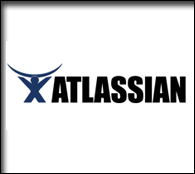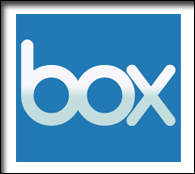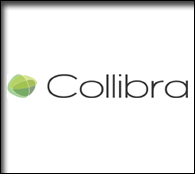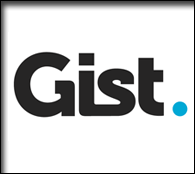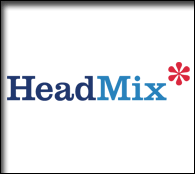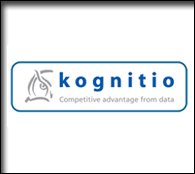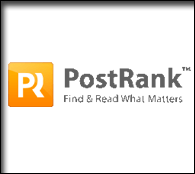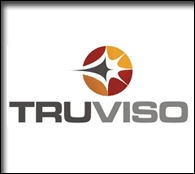defrag "theory"
Questhelper for the Enterprise
by Eric Norlin on Jan.08, 2009, under defrag "theory", general
While we’re now hard at work on Glue, (and - yes - you should come) that doesn’t mean that I’ve stopped thinking about Defrag. In fact, a few weeks back, I found myself putting some pieces together between World of Warcraft and Defrag.
For those of you that don’t know, I have a World of Warcraft (WoW) problem. As with most folks that play WoW, there’s a certain level of addiction that sets in over time. I have my friends (and the folks that do web design for Defrag and Glue) to “thank” for getting me into WoW — and it’s now a pretty good bet that I invest (spend, blow?) anywhere between 5 and 25 hours per week online playing my much-beloved warlock, Kalevra.
In any case, in WoW (for those that haven’t played), you can run around doing various things - with one of the main components being “quests.” Quests are basically tasks you have to complete to “level” (level 80 is currently the highest level for a player). The thing about quests is that they can be very time consuming in that you have to find and complete them across various expanses of land (often unexplored), using different tools and things for completion. Quests can be as simple as “kill 10 of these things,” or as complex as a 23 quest story line that eventually leads you into some wonderful state of WoW bliss.
WoW, in all of their goodness, has an open API that lets third party programmers build “add-ons” to bring additional functionality to the game. One of which is Questhelper. Questhelper provides an overlay on the WoW maps that shows you exactly where to go on a quest. Further, it tells you what to do when you get there, AND (most importantly) if you’re running multiple quests (which you always are) moves you through obtaining things in the most efficient manner possible.
All of which got me to wondering: is there any similar tool in the enterprise?
I can imagine a “questhelper” (workflow helper? task helper?) running in an enterprise setting that directs someone working on a specific task on the most efficient route for completion.
I have no idea how this would work, or if this would work, but I can certainly imagine a “questhelper” running on a corporate intranet — directing me to the right tools and people to accomplish what I’m up to in the most efficient manner possible.
Is there anything out there that’s doing this well right now?
Avoiding the innovator’s dilemma
by Eric Norlin on Nov.25, 2008, under conference topics, defrag "theory"
One of the weird parts of my “job” is to look beyond what attendees say they want to hear more about, and give them things that I think they *should* hear more about (i.e., to provide them with stuff they haven’t thought of yet). Call it the “innovator’s dilemma” for conference organizers. Too often, conference organizers give very little “analytical” thought to the space that their conference exists in, and too much weight to what attendees say they want. Granted, it’s a fine line (I’m not saying “don’t listen to your customers”), but it’s one that a good conference organizer should spend some time on.
That’s what my November-December is about re: Defrag. Take the time to absorb the immediate conference feedback, then think through the whole experience. Finally, once you’ve gained some separation, think about the biggest of big picture stuff and figure out what you need to bring to the table that people *aren’t* asking for. Getting caught giving them simply what they want can only result in a downward spiral for content. You must give them what they need that they don’t know about yet.
Of course, failures will occur. I’m not a world-class prognosticator. But I do get a pretty interesting overall view of things. One that even analysts can often miss, as they’re dragged in different directions by “customers” and vendors - and what I’m talking about (ideally) is off the map for both of those categories.
All of that said, two big pieces have really fallen into place for me in the last few weeks; two pieces that I know we need to get to Defrag 2009 in a substantive way: 1) data visualization; and 2) how a changing “interface” can impact the ways in which we interact with data. Let me briefly address each separately.Â
1) Data Visualization: we had some of this stuff at the first defrag, and I really enjoyed it. My sense is that all of us get so caught up in the “word-driven” applications that we forget the rich gold mine of insight that can be gained through good data visualization. I’m not well-versed in this space, but I’m gonna start digging. We need to start dragging visualizations into all of this semantic, enterprise 2.0, collaborative, social media stuff (and I don’t mean simply video).
2) Changing Interfaces: by this I mean stuff like Oblong and Microsoft surface.  It may seem that these new technologies aren’t all that related to defraggy stuff, but just like data visualization, I think that couldn’t be farther from true. HOW we interact with information and data simply will affect what we gain from it. Accordingly, I think we need to get the teams around these technologies talking with the enterprise 2.0, collaboration and semantic vendors of the world. Sure, textual stuff isn’t going away, but in ten years we won’t simply be using a keyboard and mouse either.Â
So, while I’m definitely listening hard to the feedback that’s calling for more content around collective intelligence, online collaboration, enterprise 2.0, social media and semantic applications, I know that we must bring areas like data visualization and the changing interface to bear on the larger topics of defrag as well. Stay tuned - it’s gonna get interesting-er. ;-)Â
Is “trust” about meta-data?
by Eric Norlin on Sep.10, 2008, under defrag "theory"
Daniela Barbosa, who will be speaking at Defrag about “pulling the thread on user data,” has an interesting post up about the recent debacle around United Airline’s stock drop. Essentially, here’s what happened:
“the article in the Sun Sentinel’s archive had no date on it. But when Google’s spider grabbed it, it assigned a current date to the piece, which then resulted in the article being placed in the top results of Google News. When the employee from Income Securities Advisors ran a Google search on “2008 bankruptcies,” the old United Airlines story appeared as the top link in the results, with a September 6, 2024 date on it. (Google has now released a screenshot that shows the UAL story as it appeared on the Sun Sentinel web site. The only date in the screenshot is September 7, 2008, the date Google accessed the page. There is no date under the story’s headline to indicate when it was published.) At 11 am Monday, the employee added the story to a feed that is included in a Bloomberg subscription service and within minutes, 15 million shares of United Airlines stock had been sold before trading on the stock was halted.”
As Daniela goes on to point out, the problem lies in a lack of good meta-data, and then rightfully asserts that “premium” information aggregation services clearly have a place in the world.
The incident and Daniela’s assertion raise something that is really worth thinking about. We’re all getting information (both inside and outside of the enterprise) from an increasing number of sources. And we’re building tools (collaboration platforms, wikis, feed aggregators, flow apps) that aren’t very good at figuring out whether or not a “source” is “authoritative.” It’s that weird realm where identity meets organization meets information. And since we’re all now moving at the speed of bits, getting it wrong is fast, easy and something that gets magnified VERY quickly.
The metaphors we’ve outgrown
by Eric Norlin on Sep.03, 2008, under conference topics, defrag "theory"
Not that anyone noticed, but Google launched a “browser” (Chrome) yesterday. ![]()
It spurred me on to a bunch of thoughts (this post), which is odd only because I haven’t downloaded it yet (I’m on a Mac not running Windows), so I’m a bit like a blind man describing a sunset. However, since when has that stopped me?!
The reason that I think Chrome represents something significant is that I think Chrome is really about changing metaphors around the web. Chrome is wrongly being billed as a browser — i.e., something built for “web pages” — and not properly being seen (by a lot) as a platform for application delivery via the web. Let me explain.
The web lives under two central metaphors right now: web “pages” and web “sites.” Blogs and RSS feeds (and Twitter, etc) have begun to change that, but there’s still a fundamental residue around “pages” and “sites.” Those metaphors matter. They matter to what we build, and more importantly, the implicit limits they set on how we can interact. I “browse” a page; its a fundamentally isloated act of solitude (i.e., I don’t “browse” with a group of people, I do it alone). I “go” to a “site.” What do I do when I get there? Well, apparently, I “browse.”
We have, of course, moved WAY past all of this on the alpha edges of what we’re doing on the web (heck, even the mainstream edges). Uploading photos is neither a place-based nor browsing experience — its about sharing (an interaction, not a thing or location).
This is what I mean when I say the metaphors aren’t sufficient to encompass what we really mean when we say “online collaboration.” There’s a cognitive disconnect around wikis because they’re collaborative vehicles (like say, whiteboards) encased in metaphors of solitude (browsing) and visiting. And somehow “everyday people” (non-geeks) don’t intuitively understand what “edit this page” means — after all, if that’s someone’s “page,” its kinda rude for me to write on it, right?
Similarly, email is a broken metaphor (for most of us anyway). Email is, without question, the most successful application ever developed - but the metaphor of write a letter, sign a letter, send a letter, get a reply, reply to the letter, etc - is NOT how most of us actually want to interact with the tool we call email. We want email for asynchronous conversation and messaging. Its the reason that Twitter direct messages have quickly become something that is responded to more quickly than email — its moving to a new metaphor that is more appropriate to what we’re actually wanting to experience.
All of this - the metaphors we’ve collectively outgrown - is why something like Chrome is important. Chrome’s an attempt to get beyond a browser that looks at pages and visits sites, and move toward a platform that is built from the ground up for application delivery (and interaction). Will they get it right? I have no idea. But the attempt is important because it points to the fact that we’re moving past of the stage of simply knowing (intuitively) that the metaphors are broken, and into a stage where we can begin to imagine what the new metahpors of interaction of the web will look like.
People ask me all of the time what makes Defrag different? I kind of giggle and tell them that I’m proud that we’re not a conference loaded with case studies. Don’t get me wrong, that has a very useful place (in a nearly mature market). We’re just nowhere near that place. Defrag is about gathering to explore, imagine and build these new metaphors. The web should be getting smarter, more implicit, more enabling.
Let the rest of the world get mired down in economic uncertainty, productivity enhancement and cost reduction. There’s plenty of time for you to do that (trust me). Come to defrag and help us grow out of these metaphors. And then watch as the supposedly “pie in the sky” things you find at Defrag are suddenly “real world” things that you’re using and implementing everyday. Kinda cool, huh?
Enterprise 2.0 as part of a larger theme
by Eric Norlin on Aug.04, 2008, under conference topics, defrag "theory"
(Alternative title of this post: “Is Enterprise 2.0 b*llsh*t?”)
There’s been a bit of rumbling lately about enterprises not being satisfied with their “enterprise 2.0″ implementations — specifically, a McKinsey report that only 21% of respondents are satisfied with their implementations, while 22% are clearly dissatisfied (some to the point of abandoning their projects). Defrag obviously touches on a lot of “enterprise 2.0″ topics, though I do think that enterprise 2.0 is just a piece of a much larger topic area. All of which led me to the idea for this post — and the incendiary alternative title. So, let’s dig in.
The term “enterprise 2.0″ comes from Harvard professor (and past Defrag speaker/friend), Andy McAfee. Without getting into the quagmire of definitions, let’s just assume that “enterprise 2.0″ denotes those tools and technologies used by enterprises that seek to promote collaboration and social networking, while harnessing a lot the enterprise’s unstructured information and emergent structures. These uses occur internally and externally (with customers and partners). The “tools” tend to be blogs, wikis, RSS, social networks — and, increasingly, some platform technologies (that extend the functionality into data mash-ups, etc).
So, let me answer the question: Is enterprise 2.0 b*llsh*t?
In a word: “no.”
However, I do get the sense (and this is all just gut) that the “enterprise 2.0 movement” is about to enter the often hard and trudging “trough of disillusionment” that Gartner made famous. Its a natural progression of technology adoption, and doesn’t reflect on the potentialities of the technology (imho), so much as it alludes to market saturation and the natural cycle that weeds out the marketplace.
Why then, am I so ready to say that enterprise 2.0 is *not* just bunk? Because I believe that it is actually just one piece of a much, much, much larger puzzle.
To explain that, I turn to an analogy (from my experience in the world of digital identity):
“Identity management” is a term that has only been developed (and nearly worn out) over the last 5-7 years. Prior to the development of “digital identity” and “identity management,” the whole space began (way back when) around the idea of authentication, or knowing “who” someone is. The authentication space grew out of (in a tertiary sense) cryptology, as cryptologic keys became a way to “authenticate” a user on a corporate network (think of the RSA key fob that is now nearly ubiquitous). It wasn’t long before authentication (the who) grew out to other areas: where, what, why, how, etc. All of these little pieces were NOT initially seen as part of the larger piece that is “digital identity,” or “identity management” - rather, it took the industry a matter of years to figure that out (I’d like to think that Digital ID World helped to play some small role in that). Before long, “identity” was now something that was enveloping meta-directories, role management, compliance, and a whole host of solutions that never would’ve been seen as part of the “authentication” space in the early days. You can actually chart this progression by examining how the RSA Security conference has grown over the last ten years.
The key to all of this growth in identity (which is now a huge and largely successful space) occurred because the original piece of the puzzle (authentication) came to be seen as part of a much, much larger problem.
And so I believe it is with “enterprise 2.0.”
Defrag’s impetus was the problem of “information overload.” That early mandate led us down a bunch of seemingly unrelated paths (this is, by no means, an all-inclusive list):
Enterprise 2.0:Â Blogs, wikis, RSS, social networking — all of the tools that promote collaboration and harnessing emergent groups and unstructured data.
The Semantic Web:Â You know, you’ve read about it for years - and only recently has the semantic web started to come to fruition. Broadly speaking, semantic web tools and technologies seek to add a layer of meta-data to our existing miasma, thereby opening nearly untold layers of meaning.
The Implicit Web:Â This term (made popular by Brad Feld and Fred Wilson - mostly) really encompasses the idea that there should be tools that utilize your attention to sort and contextualize information more effectively. Some have called it “the lazy web” (which I like), and I usually think of it as “making technology more intuitive” - not in the “easy to use” sense, but in the sense that technology begins to approximate our human sense of intuition.
Collective Intelligence, Next-level Discovery and Mashing things together:Â A fourth bucket that catches a lot of things that you can just sense fit into the space.
My basic thesis with Defrag (and make no mistake, Defrag is a “thesis” that we’re seeking to “prove out”) is that the “success” of all of this depends on our communal ability to come to see all of the related pieces of the puzzle versus getting caught in the trap of trying to take one label (enterprise 2.0), which is already fairly well defined and expand it to include everything.
The whole point of a thesis is solving a big problem: information overload. Now, there are problems with that term in that I think it can inherently add negative connotations (where “overload” is a bad thing), when that shouldn’t necessarily be the case (see Stowe Boyd’s thinking on this). Still, its the best thing we have for now, so let’s run with it.
We’re all drowning in the flow of information: inside and outside of the enterprise, in groups and as individuals, through network effects and user pathways. What we can all sense is simple: If we can build great tool-sets that attack pieces of this problem, we can end up with a future that helps all of us navigate through the river of info more productively, efficiently and enjoyably. Interestingly, this problem *crosses* the enterprise/end-user boundary - and the ground for innovation is beyond fertile.
At this point, I’d like to take a second to say how much great work is being done by “enterprise 2.0″ companies. Let’s not discount the incredibly difficult piece of the puzzle that they’re working on. That said, though, Defrag is about getting that group of people into a room with other, different groups of people that the “e2.0″ folks don’t normally interact with. Let’s “mash-up” (in a meatspace sense) the semantic, implicit and 2.0 folks, mix in some collective intelligence and other things, and see if in our communal discussions we can begin to find the key relational and correlating threads that actually move the space forward — cuz I gotta tell ya folks, just building a better “collaboration platform” ain’t gonna get us there!
Its a big problem, with a big potential solution, and it needs a big, wide open space (like defrag) to explore these things.
That’s why I think “enterprise 2.0″ is part of a larger theme. That’s why I think Defrag is a different kind of place. And that’s why I think you should join us. ![]()
An evolution of definition
by Eric Norlin on Jun.18, 2008, under conference topics, defrag "theory"
I’ve started to see some articles surface that are highlighting the problem of “defining enterprise 2.0.” I’m more than sympathetic to attempting such feats. Back when we started Digital ID World, “digital identity” was such an out-there concept that for the first two years of the conference, every single presentation (no joke - EVERY SINGLE PRESENTATION) began with the presenter telling us *their* definition of digital identity. Needless to say, it got tiresome — and actually, one of the ways we knew that digital identity was getting real was in year three when no one felt the need to define it any longer. That’s my “free tip of the day” to the enterprise 2.0 crowd. Measure adoption by a lack of need to define.
That said, we’ve long used a pretty fluid idea of what we mean when we say “Defrag” (the conference), so I thought it might be useful to review the “evolution”:
1. It all started with that guy named Feld. Brad was posting about an investment theme he was figuring out and he was struggling with what to call it. It went from “intelligence amplification” to some other things I forgot to “the implicit web.” The core idea, though, remained the same: we have a problem of “information overload,” and we need better tools for dealing with it.
Brad’s initial blogging A) led to us starting Defrag, and B) (importantly) insisted on crossing the enterprise-consumer barrier. This was not simply “collaboration” or “productivity,” rather it was a bigger problem that ended up (we discovered) encompassing those two things.
2. The second iteration of Defrag (the idea) happened as I started to talk to people about this new conference we were launching. I needed an analogy to help explain things. The one that stuck (if badly) was the “brainstorm.” Roughly: what we’re doing with the internet is recreating the brainstorming session. We’ve handled co-location (physical space) and simultaneity (time), and we’re even working on who’s in the room (identity), but what we haven’t done yet was develop tools that helped us (as individuals and groups) turn data into knowledge at a faster pace. We needed to get some *velocity* on the process of insight. This analogy led directly to the tagline you see on Defrag today: Accelerating the “aha” moment. (For those of you interested, the original tagline for Defrag was “assembling the disparate bits.”)
3. The third iteration of Defrag occurred between the launch of the conference and ran through the conference itself. It was a communal process of part self-identification and part-critical thinking. At the end of it, we discovered that a bunch of themes related to Defrag: the attention economy, the semantic web, enterprise 2.0, web 3.0 (ugh), information overload, the implicit web, social networking (especially in the enterprise), even knowledge management and search.
That iteration has not led us to some concrete definition. Rather it helped me to write this overly-broad statement: “As online data is growing and fragmenting at an exponential pace, individuals, groups and organizations are struggling to discover, assemble, organize, act on and gather feedback from that data. In the largest sense, we’re all looking to augment the pace at which we achieve insights on raw data — to acclerate the “aha” moment. ”
You see? It doesn’t *quite* capture it.
4. We’re standing now in the fourth iteration - what I’d call the iteration of intersections. What we know is that we have this really big problem. We can define that problem as “information overload” broadly, but even that might miss the mark slightly. The problem actually gets highlighted by putting a bunch of terms on the board and letting a Venn diagram overlap to outline what we’re talking about. Those terms, then, include: the implicit web, enterprise 2.0, semantic web, collective intelligence, (social) networking in the enterprise, next-level discovery and some others I’m probably forgetting.
Let me be clear: Defrag is not about being all things to all people. There are some technologies that simply don’t apply. We’re not trying to be the big-tent circus of web 2.0 that brings everything under one roof (not that that’s bad, that’s just not us). What we are trying to do is bring together disparate parties that might not necessarily see themselves as working on the same problem, and get them to see that “aha” — maybe so.
Its a big, nasty, hairy, meaty problem - and it generated a lot of really good stuff last year. We’re gonna do it all again, so I hope you’ll contribute to the conversation and join us.
As a bonus, Read/WriteWeb is writing about the problem today, and we’re reading. ![]()
Foundational Information Overload Channels and Flow
by Eric Norlin on Jun.16, 2008, under defrag "theory"
I woke up this morning thinking about the “foundational information channels”: email, calendaring, RSS readers, flow applications (twitter). I’m placing those in contrast to foundational infrastructure (our network of contacts, digital identity, etc) - where “social networks” cross the boundary of platform and application (channel).
In that context, I came across two blog posts: One from Brad on email overload and one from Pete on calendar silos. Both are highlighting “problems” with our foundational channels of information. Now, like Brad, email is my primary communication hub and I’m a “zero inbox” guy. And, like Pete, I get frustrated by the silo’d nature of nearly everything (and that includes calendars.
All of that leads me to the idea that maybe we need to focus on some of these foundational channels (applications) for a while. Simultaneously, though, I’m absolutely enthralled with things I hear Stowe Boyd talking about — specifically the idea that there isn’t an information overload, so much as there is an information “flow.” Its then our imperative to get in the flow of things.
I can’t explain this nearly as well as Stowe can, but I think the basic idea gets illustrated really well by an example. Email, traditionally, treats information as a discrete chunk (object) to be acted upon: read, respond, follow-up, take further action. We know this because email threads have long been known to be an incredibly inefficient way to move any project forward. The whole idea of flow (as I’ve read from Stowe) is that if something important is out there, it will find me. Now, obviously, we have a need for both. But I think there’s something deep inside of what Stowe’s saying that could help us to really rethink how we envision email and calendars; something metaphorical; something that would reshape our whole ethos around those tools.
I haven’t got a hold of that yet, but I’m hoping to flesh that out via the Defrag agenda (interestingly, I have a call with Yori over at Timebridge tomorrow about some of these issues).
I suspect the nugget that’s there reveals not only a reshaping of the metaphors behind email and calendars, but it leads to a deep ability to bring “business intelligence” tools to bear on how we deal with the “flow.” Yep, I’m envisioning something that combines semantic stuff, tagging, social networking and discoverability into an ability to not slow the flow, but harness the sheer energy of it.
Does that sound just silly? Eh, maybe — but we’re all working on it. ![]()
Beyond Incrementalism 2.0
by Eric Norlin on May.27, 2008, under defrag "theory", industry stuff
I spent some time this weekend “thinking big” about the state of things in our little world called “technology.” What spurred it on was several conversations I’ve had as of late (with folks like Jeff Nolan and others) where this idea that “everything has just gotten incremental” started to creep in. Tim O’Reilly alluded to the same thing in a recent post when he wrote about the need for companies like Microsoft and Yahoo! to have “big, hairy, audacious goals.” To be clear, I don’t think that there aren’t great vendors out there doing innovative things (heck, we’ve got some great defrag sponsors doing just that), it is more like the “industry” (big “I”) as a whole has settled into an echo chamber of “incrementalism” where the biggest issue we can wrestle with is FriendFeed versus Twitter.
A lot of this is driven (I think) by the economic slowdown. In slower periods, you’ll see the collective begin focusing on “cost-reduction” or “productivity enhancing” technology, while they simultaneously scramble to “monetize” the tools not related to that. It happened during the dotcom bust, and I think its happening — to some extent — now. One of the tertiary events from this line of thinking is that a lot of the tech conference scene gets very boring, very fast. The reasoning is pretty simple: tech conference producers believe that sponsors will only sponsor if they have the right leads (not a bad belief), but they then jump to another belief that enterprise IT people (broadly speaking, a “lead”) will only be interested in “cost-reduction” stuff (because of the slowdown). So, you get this self-perpetuating cycle of “how to squeeze the most out of your IT budget,” or “how to keep your CIO job in a slowdown” drivel.
The dirty little secret is that no matter what the economic environment is like, there are smart people in enterprise IT (and in the development world) that are paid to think about and solve big, hairy, audacious problems. They will come to tech conferences — they just won’t come to BORING tech conferences. In other words, incrementalism sets in (in both technology and conferences) and then….well - things feel a little “flat.”
All of that precursor had me thinking about why (and how) we started Defrag. Defrag’s initial spark came from Brad’s blogging about “information overload.” Brad (and I’m paraphrasing him, so upfront apologies) was thinking about how he’d like technologies that could help him to deal with the flow of information that he was drowning in on a daily basis. That spark developed through conversations into the idea that we had a big problem to solve: how to deal with information overload in such a way that it actually brought about insight more quickly. That “moment of insight” (”aha moment”) led to Defrag’s unofficial tagline being “accelerating the aha moment.”
Initially, that idea got called the “implicit web,” and it tended to be focused on the individual. As we explored things, though, we (at least, I think I can include Brad in this) came to see that the big, hairy problem wasn’t just an implicit web one. It was actually a problem that sat at the intersection of a bunch of technologies. Suddenly, we were thinking about and talking with people in the “enterprise 2.0″ space, the implicit web space, the semantic web space, and even the social networking space. In other words, the technologies involved weren’t what we were “throwing defrag” for — rather, the bigger problem-set was (is) what Defrag was (is) all about (the technologies were pieces of solutions).
None of that is to say that enterprise 2.0 technologies, or semantic web technologies, or implicit web technologies aren’t trying to solve big hairy problems. What it is was saying is that those big hairy problems are part of a larger, bigger, hairier, bigfoot-like problem — and that if we could get the disparate parties, be they vendors or developers or enterprise IT folks, talking about the bigger problem, we might find ourselves getting beyond something incremental and to something really important. The sum really would be greater than the parts.
I love big topics like that. I love big topics like that even more in periods like this. While everyone else rails against the reverberations of the echo chamber incrementalism, a group of people will gather to really think hard and try to solve something that none of us have yet to even *phrase* very well. Defrag’s attendees (participants) are people that have a sense of that big problem coming in. And, for the most part, I think they know they can’t solve with a suite license from big vendor X. They know these are all tools in process - and I think they even come to prod vendors into thinking about what they could be doing differently. The energy, community and connection lies in the problem.
Somewhere out there is a step beyond incrementalism. I can’t wait to be there as a bunch of smart people tease that thread out of this tangled mess.
Defragging technology solutions
by Eric Norlin on May.22, 2008, under defrag "theory"
Yikes. Apologies for the lack of blog posts - the month of May is flying by.
I’ve been reading this post by Dare Obansanjo wherein Dare takes up the subject of “web 2.0″ adoption — or, more specifically, that early adopters are not the same as mainstream adoption. The point of the post is summed up in the ending question: “…we solving a problem that everybody has or are we building a product for Robert Scoble?”
In the context of enterprise adoption, I think its an especially good question.
We never started Defrag to deal with “web 2.0″ topics. Rather, we wanted to tackle the broad problem of information overload and how it is that technology can help to discover, sort, organize, and make useful that overload (”accerlerate the aha moment” if you will). As I look at Defrag sponsors and potential sponsors, you can see a broad swath of tool sets that get used both in the enterprise and, more strictly, by end users. That swath includes “enterprise 2.0″ (collaboration) technologies, semantic technologies and implicit web technologies. And, as I speak with folks, I’ve started to get a sense of what technologies are further into the uptake cycle than others.
To be clear, Defrag is an early adopter conference. We have lots of great enterprise folks that are thinking about BIG problem-sets and working on solving those early things. That said, you can feel that some technologies like social bookmarking in the enterprise, or social networking in the enterprise, are definitely experiencing more uptake this year than others.
The “unique” part of the Defrag conversation is watching how these technologies in different parts of the adoption cycle are interacting with each other to solve bigger problems. What does it mean, for instance, when you can tag information, discover it via social networks, search and recombine pieces of it and then feed it into different applications and uses via widgets and RSS. That process is not just *one* Defrag vendor — its a whole lot of them taken together. And really, I don’t think any of us would want that problem to be solved by one vendor (at least, I wouldn’t).
I guess in that way Defrag really is assembling the disparate bits of technology solutions. And I’d bet that that process of “defragging” will be what takes these solutions from early adopter to mainstream.
A great “post” by Sam and Stowe
by Eric Norlin on May.05, 2008, under defrag "theory"
Okay, its not really one post - but Sam Lawrence started something interesting this morning with this blog post:
“The new inbox needs to be a goldpan…It should not only cut the rapids back to a quality stream but help me channel my attention so it’s applied where it counts. It understands and shares which people and topics I’m most connected to. It pools conversations of interest and conversations that need action. Perhaps it even routes streams where I’m blocking. Ultimately, my new inbox needs to turn the perfect storm into a bubbling brook. “
And Stowe is following it up:
“I think that an open model of communication could be applied in other contexts, ones that are significantly more constrained than the global model that Twitter and other open social applications have leveraged. Clearly defined groups — like those explicitly working on a project together — will share access to project-related streams of information, but less clearly defined ‘groupings’ — all those Workstreamer users interested in Ajax or User Experience Design, for example — will share streams of information made public by others in the community of Workstreamer users.”
Check both posts out.
